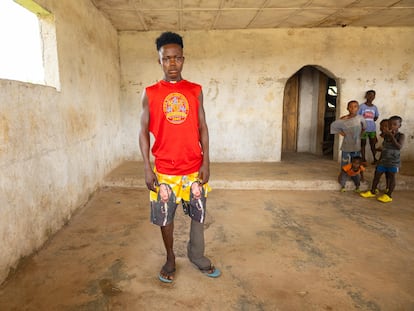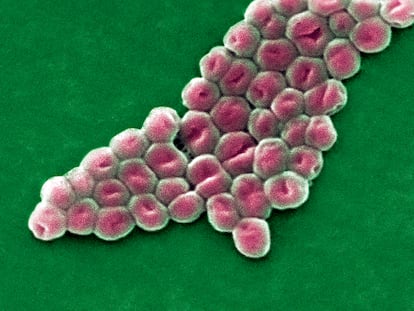A biologist attacked by the bacteria that devours human flesh: ‘It looks like a shark bite’
Spanish scientist Patricia Casas shares her four-year battle with the Buruli ulcer. A new study suggests that mosquitoes transmit this neglected disease
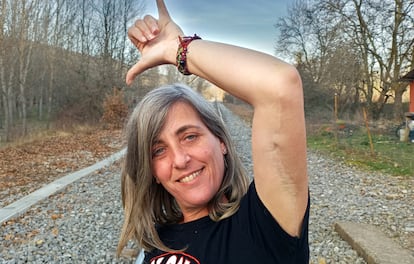

Biologist Patricia Casas is the first Spanish person known to have contracted the Buruli ulcer, an obscure disease caused by flesh-eating bacteria that can disfigure the face and limbs. Casas spent five months in the Peruvian jungle for a Titi monkey conservation project. Upon her return a decade ago, she noticed a small sore resembling a cigarette burn on her left arm. The sore grew rapidly, eventually becoming a five-inch (12-centimeter) ulcer, with inflammation extending from her elbow to her armpit. The doctors kept her in León Hospital (northwest Spain) for six weeks while they tried to diagnose the disease. “We didn’t know what it was for so long that I began calling it Débora just to give it a name,” said Casas. Débora slowly ate away at the flesh on her arm for four years.
Débora was actually a Buruli ulcer, one of 20 neglected tropical diseases found in the poorest, most isolated regions of the world. The bacteria causes around 2,000 cases annually, mainly in central Africa but also in areas of Peru, Mexico and Australia. The transmission and disease reservoir of the bacteria in humans remain unknown, but Australian scientists now suspect mosquitoes.
Casas went to hell and back with the disease. The Mycobacterium ulcerans bacteria is challenging to cultivate in a lab, making its identification and diagnosis complex. Casas went to an outpatient clinic in León on March 10, 2014, three months after returning from Peru. Staff at the clinic mistook the symptoms for a burn and prescribed ointment. However, as the lesion continued to grow, they suspected an allergic reaction. After trying various treatments, the frightened biologist eventually went to León Hospital’s emergency room. Unfortunately, doctors struggled for months while the bacteria ate away at her arm. Finally, a diagnosis revealed a disease Casas had never heard of — Buruli ulcer.
The bacteria changed her life. Casas spent almost two years on antibiotics, which caused liver damage and deafness. With her immune system weakened, the disease reappeared and continued eating away at her arm. After undergoing four surgeries in four years, she was finally cured. Casas had to give up her career in biology and began working in the hospitality industry. She currently manages a hostel with a pub in Pedrún de Torío, a small town in León. A prominent scar is a constant reminder of her harrowing experience. “It looks like a shark bite.”
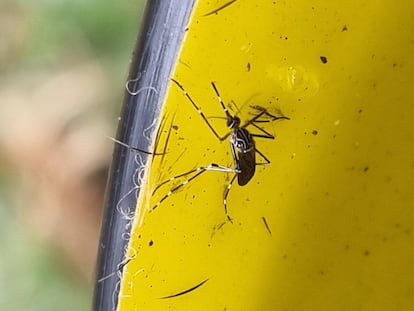
The transmission mechanism of Buruli ulcer has remained a mystery since its discovery in 1948. Casas believes that it all began with a mosquito bite on her left arm while she was working in the Peruvian Amazon. A recent study published in Nature Microbiology journal supports her theory.
The region around Melbourne, Australia, has seen a rise in infections since 2017, with over 200 cases reported annually. Australian microbiologist Tim Stinear and his team examined over 65,000 mosquitoes in the Mornington Peninsula, a popular tourist spot near Melbourne known for its beaches and vineyards. The prevalence of Buruli ulcer there is approximately one case for every 2,000 residents.
Stinear’s research found an overlap between people suffering from Buruli ulcers and mosquitoes carrying the bacteria in the same areas. Additionally, there is a small, marsupial mammal called the common ringtail possum that consumes its own feces to maximize the nutrients from eucalyptus leaves. The microbe causing Buruli ulcer is found in this possum’s excrement, and mosquitoes then transmit the bacteria from possums to humans. The University of Melbourne, where Stinear conducted the research, issued a statement about the study’s findings: “80-year-old mystery solved: Mosquitoes spread flesh-eating Buruli ulcer.”
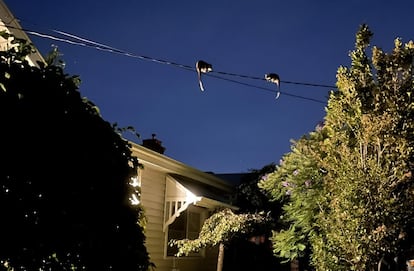
Stinear remains cautious about declaring victory. In the largest study in Africa’s disease-stricken region of Benin, only 4,300 mosquitoes were examined, but none were found to be associated with the bacteria. “Since the positive mosquito frequency in Australia was only 1%, the lack of evidence in the Benin study doesn’t mean the disease isn’t present there,” said Stinear. Other researchers in the Ivory Coast have pointed to aquatic insects as a potential means of transmission and grasscutters (cane rats) as an animal reservoir. Conducting thorough research in the heavily affected regions of Africa is of utmost importance, says Stinear.
The mosquito in the spotlight is Aedes notoscriptus, an Australian species first detected in Los Angeles in 2014 that has since spread throughout California. Stinear believes it’s possible for Buruli ulcer cases to appear in the United States if there’s a suitable animal reservoir and the bacteria are introduced. Since Melbourne and California have similar Mediterranean climates, Stinear also doesn’t rule out the future transmission of Buruli ulcer by insects in other temperate countries, like Spain.
Mosquitoes are known to transmit parasites like malaria and viruses such as dengue and yellow fever, but not bacteria. Biologist Jordi Figuerola and his team at the Doñana Biological Station (Seville, Spain) have established the Guadalquivir Mosquito Observatory to monitor potential disease carriers. Figuerola is more focused on the Aedes aegypti mosquito, which caused severe epidemics of dengue and yellow fever in Spain for 300 years until its eradication in the mid-20th century.
Aedes aegypti has been detected in the Canary Islands on several occasions in recent years, although Spain’s Ministry of Health believes the situation is under control. According to Figuerola, the increasing merchandise traffic, especially plants and used tires, along with more travelers, will facilitate the spread of insects and diseases. “Furthermore, as temperatures increase due to climate change, the range of mosquitoes will expand, and their activity will extend for longer periods.”
Patricia Casas ponders the impact of not having access to excellent, free public healthcare and a dedicated doctor. “They might have had to amputate my arm.” Casas urges authorities to allocate more resources to prevent suffering from neglected diseases in the poorest countries. “You’ve got the power, and it should also resonate in your conscience and heart,” she said.
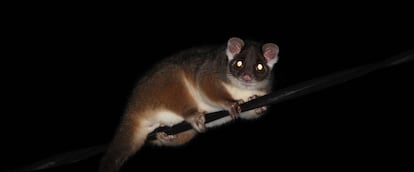
Patricia Casas’ case is unique in Spain. Biochemist Israel Cruz, head of International Health at the Carlos III Health Institute, knows of only one other patient: a 27-year-old woman from Equatorial Guinea. After battling Buruli ulcer in her left leg for four years, she traveled to Barcelona in 2003 to find a cure. Unfortunately, due to the severity of the ulcer, exacerbated by HIV, doctors had to amputate her limb.
Early diagnosis enables an eight-week Buruli ulcer treatment with two antibiotics — rifampicin and clarithromycin. However, the financial burden of treating the disease can be devastating for many families. Israel Cruz is working with an international consortium led by the University of Zaragoza (northeast Spain) to shorten treatment to four weeks by adding amoxicillin and clavulanic acid. During clinical trials in remote areas of Benin and Ivory Coast, Cruz saw patients with limbs completely devoured by Buruli ulcer.
Cruz applauds the Australian study led by Stinear. “They have used all their resources to understand transmission in Australia. Unfortunately, Africa lacks the financial means for comparable research. It would be ideal to have the same drive and resources for Africa.”
Patricia Casas kept her sense of humor during her long ordeal, but occasionally feared for her life. At one point, her ulcer “looked like a French omelet” stuck to her arm. “My mother would ask, ‘How’s that little omelet?’” She laughs it off now, but undoubtedly suffered a great deal. “Medical studies usually describe it as a painless ulcer, but it’s definitely not. It hurt a lot.” When her immune system weakened, Casas had to quit biology due to the risk of getting sick from contact with wildlife. “When I first started working as a waitress, I actually imagined customers with heads of birds, turtles and monkeys, you know, just to make my job a little easier.” A decade after a flesh-eating bacteria changed her life, Casas intends to return to biology soon. “I need some fur and feathers in my life now.”
Sign up for our weekly newsletter to get more English-language news coverage from EL PAÍS USA Edition
